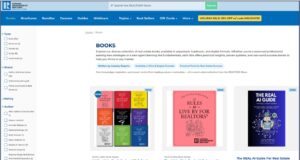Proposed “Qualified Residential Mortgage” Rule Would Stunt the Housing Market and Shut Out Qualified Home Buyers
WASHINGTON, D.C. – June 2, 2011 – (RealEstateRama) — Kenneth W. Edwards, Policy Counsel for the Center for Responsible Lending, presented the following remarks at a press briefing held to discuss the impact of the proposed Qualified Residential Mortgage (QRM) rule on consumers. Other groups participating in the conference were the Mortgage Bankers Association, Consumer Federation of America, the National Community Reinvestment Coalition, and the National Housing Conference
Good morning, I’m Ken Edwards, Policy Counsel at the Center for Responsible Lending, a nonprofit, nonpartisan research and policy organization dedicated to protecting homeownership and family wealth. We are affiliated with a community development lender, Self-Help. In the past 30 years, Self-Help has provided nearly $6 billion of financing to more than 69,000 low-wealth families, small businesses and non-profits.
Today at this event we are focused on “risk retention” and “qualified residential mortgages,” but what we’re really talking about is what the mortgage market will look like in the future, and who will be able to buy a home. Implicitly, we’re also talking about how many qualified families could be effectively barred from ownership and the enormous lost opportunity that would represent for all of us.
We strongly agree that mortgages that are exempt from risk retention rules should be responsible and sustainable. But we strongly disagree that draconian requirements for down payments, credit, and debt-to-income ratios are necessary to produce responsible and sustainable mortgages. The financial reform bill went a long way in establishing rules to ensure lenders check a borrower’s ability to repay. These are essential, sensible guidelines, and we must be careful about adding unnecessary restrictions placed on top of the strong new rules we already have.
If we go with overly stringent requirements, we have a lot of losers, including the American economy. But a key point that shouldn’t be lost is that the risk retention rules are not only an economic issue, they are a civil rights issue.
African-American and Latino families, who during the subprime boom received a disproportionate share of the most expensive and dangerous kinds of loans, are now feeling a disproportionate impact from the foreclosure crisis.
A year ago CRL issued new research, “Foreclosures by Race and Ethnicity: The Demographics of a Crisis.” We found that people in communities of color have lost their home to foreclosure at much higher rates than whites: 17 percent of Latino and 11 percent of African-American homeowners have lost their home or are at imminent risk of losing their home, compared with 7 percent of white homeowners.
This is devastating, especially given racial disparities in wealth that have gotten even worse in recent years. Real median income has generally dropped for all American households, but the largest declines have been in communities of color. From 2000 to 2009, real median income for Latinos dropped from more than $41,000 down to $38,000. For African Americans, the decline was from roughly $37,000 down to $32,500. At the same time, the poverty rate rose, and now one in four African Americans and Latinos live in poverty in the United States.[1]
Yet banking regulators have proposed a risk retention plan that will certainly widen the wealth gap. Their proposal calls for a 20% down payment. Given that down payments play a small role in default compared with the other factors already addressed by the rule, and that large down payments present such an insurmountable barrier to low-wealth families, they should not be part of the exemption to risk retention.
In fact, low down payment home loans have been a significant and safe part of the mortgage finance system for decades. Between 1990 and 2009, more than 27 million mortgages were made with low down payments that did NOT carry the risky features found in subprime loans.
Consider the enormous challenge for the average family to save enough money for even a 10% down payment:
For the average US household, it would take over 10 years to save enough for a 10% down payment and 2% closing costs, even if they saved for nothing other than a house.
For the average Latino family, it would take 12 years.
And for the average African-American family, it would take about 15 years.
These households include many families who are employed and have good credit records. Yet, a down payment would pose an unnecessary barrier to homeownership. Among renters, only the wealthiest 25% of white families nationwide have more than $5,000 in cash savings. For renters of color, only the wealthiest 25% have more than $2,000. Many families—white, brown and black—haven’t been able to put a lot of money away, but they can pay their mortgage on time every month.
Homeownership is a personal opportunity for these families, since owning a home is associated with myriad benefits, including living in safer and more stable neighborhoods and better health and education. But making homeownership accessible to these families also represents an opportunity for all Americans:
- An opportunity for communities who seek the stability, citizen involvement and property revenues that homeowners bring.
- An opportunity for businesses, large and small: home builders, realtors, mortgage lenders, consumer-goods stores and all the many merchants that depend on a strong housing market.
- An opportunity for faster and stronger economic recovery. Until housing gets back on a growth track, it’s hard to see how we’ll have a thriving economy.
Keeping mortgages out of reach for qualified families is keeping recovery out of reach for everyone. We need to make sure our parents will be able to sell their house, and that our children will be able to buy.
We can limit home-buying opportunities to the wealthiest in our nation. Or we can make homeownership accessible to any family who demonstrates they can repay their loan. The choice seems very clear, and making the right decision is urgent.
Thank you.
[1] For whites, the poverty rate is 9.4%.
For more information: Kathleen Day at (202) 349-1871 or ; Ginna Green at (510) 379-5513 or
; or Charlene Crowell at (919) 313-8523 or
.
###
About the Center for Responsible Lending
The Center for Responsible Lending is a nonprofit, nonpartisan research and policy organization dedicated to protecting homeownership and family wealth by working to eliminate abusive financial practices. CRL is affiliated with Self-Help, one of the nation’s largest community development financial institutions.












